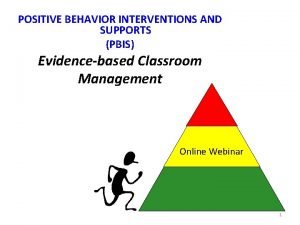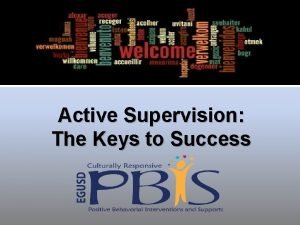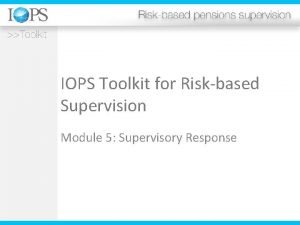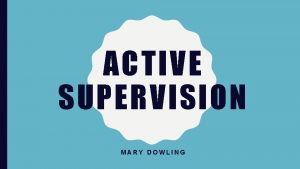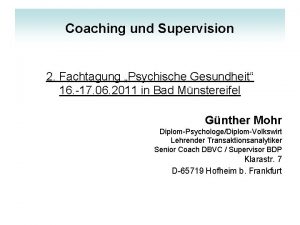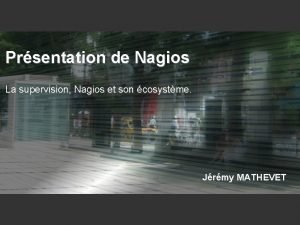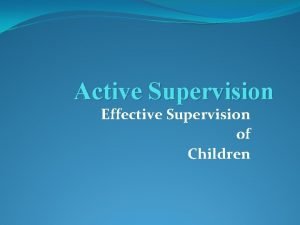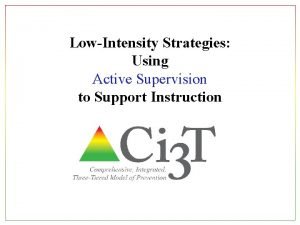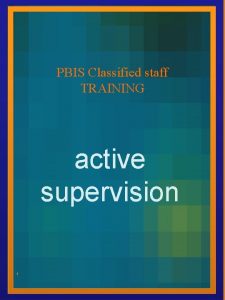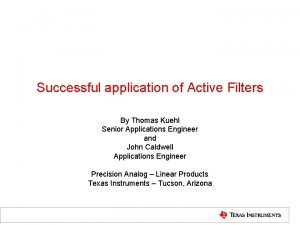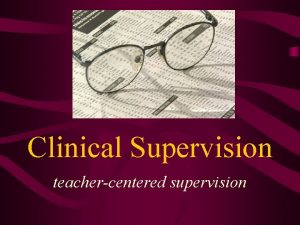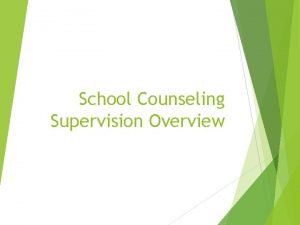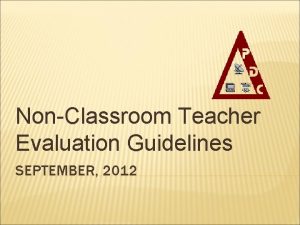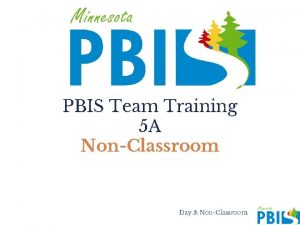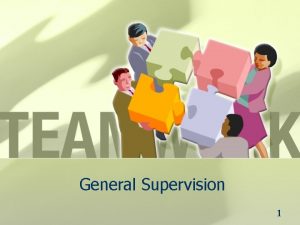Active Supervision NonClassroom Applications What Is Active Supervision











- Slides: 11

Active Supervision Non-Classroom Applications

What Is Active Supervision? • Active supervision is a proactive approach used in school settings to monitor a large area in order to ensure safety and reduce problem behaviors from occurring. • It is most commonly used in non-classroom settings such as the cafeteria or playground since these types of settings often have less adult direction and supervision. • By scanning and moving around the area while interacting with the students, staff members support and reinforce appropriate behavior and correct inappropriate behavior.

What Are the Features of Active Supervision? • Movement • Scanning • Positive Contact • Positive Reinforcement • Instructional Responses • Immediate and Contingent Delivery of Aversive Consequences • Team Directed Data-Based Decision Making and Intervention Implementation

Movement • Constant movement tends to give students the impression you are everywhere. • Movement should be random and unpatterned. • Movement should target known problem areas, activities, and individuals.

Scanning • Maintain constant visual movement • Look at students’ behaviors not just the games, clothes, etc. • Identify and pay attention to behaviors the precede misbehavior—games breaking up for no reason, angry gesturing, scared looks, someone running away from a group. • Listen for behavior—angry voices, whining, panicked voices, authoritative commands • Focus on as many different areas as you can. • Recognize potential trouble spots and scan them often. • Minimize time spent dealing with problems— “Two-Minute Rule”

Positive Contact • Not the same as positive reinforcement • Friendly, helpful, open demeanor • Proactive, non-contingent • High rate of delivery • Goal is to build relationships

Positive Reinforcement • Immediate • Contingent on behavior • Consistent • High rate • Goal is to change behavior

Instructional Responses • Immediate • Contingent on behavior • Nonpersonal, calm tone of voice • Specific to behavior • Consistent across staff • Systematic • Pre-correction—reminding, prompting • Correction—define the behavior students must exhibit • Model—demonstrate the expected behavior • Practice—ask them to show you the appropriate behavior • Test—watch for correct usage next time and acknowledge • Reteach—some students require more than one exposure to the skill

Immediate and Contingent Delivery of Consequences Characteristics • Neutral, business-like demeanor • Non-argumentative, noncritical Process 1. Take the student aside. 2. Review what you saw. 3. Ask the student state the expected behavior. If they can’t or won’t, then state the expected behavior. • Consistent 4. Give student choices for correcting the problem behavior. • Fair, non-arbitrary 5. Explain the school-prescribed consequence. 6. Apply the consequence immediately or as soon as possible.

Immediate and Contingent Delivery of Consequences Two-Minute Rule • If you cannot correct a problem behavior within one or two minutes, the student should be referred to another setting or staff member for processing. Process PROBLEM BEHAVIOR OCCURS Supervisor defines problem and gives the student a direction, a correction, and/or consequence. Student is Compliant Supervisor acknowledges cooperation (thanks or praise). Student is Noncompliant Supervisor redirects and gives student choices for compliance.

Team Directed Data-Based Decision Making • Administrative buy-in and support • Meet regularly • When? Where? Who? What? Why?
 Active supervision checklist
Active supervision checklist Active supervision clipart
Active supervision clipart Active supervision toolkit
Active supervision toolkit Head start active supervision poster
Head start active supervision poster Active supervision
Active supervision Centreon nagvis
Centreon nagvis Objectives of supervision
Objectives of supervision Active supervision definition
Active supervision definition Active supervision checklist
Active supervision checklist Active supervision pbis
Active supervision pbis Thomas kuehl
Thomas kuehl Primary active transport vs secondary active transport
Primary active transport vs secondary active transport
